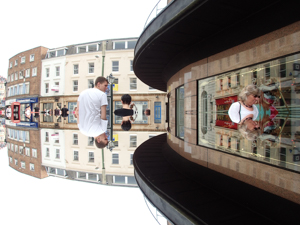What happens to the Consciousness part after Self-realization (figurative merger)? – (Continued from Part – 2/3)
Shankara formulates our question in a slightly different manner in his introduction to the subject matter at the Section 4 of the Chapter 4, Vedanta sUtra-s. He states:
“The chAndogya Upanishad at 8.12.3 tells us that ‘after having risen from this body and after having reached the highest light, this serene happy being becomes established in Its own real form (i.e. Self or nature).’ Does that being become manifest with some adventitious distinction (as it may happen in a special region like heaven) or is It established as the Self alone? What could be the final conclusion?”
Shankara is very categorical and clear in his answer and commentary at the next three aphorisms (# 534-536). In the words of Swami Krishnananda, “Emancipation is a cessation of all bondage and not the accession of something new, just as health is merely the removal of illness and not a new acquisition. If release is nothing new that is acquired by the individual self, then what is its difference from bondage? The jIva was stained in the state of bondage by the three states, i.e., the state of waking, dreaming and dreamless sleep.” Continue reading

